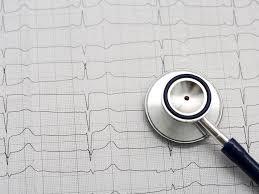
0768_SBMF_Beyond the Basics: Performing an Electrocardiogram for the Adult and Pediatric Patient_10/09/25_Live
Description:
This live virtual continuing education course provides training aligned with the SBMF policy “Performing an Electrocardiogram (ECG) for Adult and Pediatric Patients.” The course emphasizes patient safety and best practice principles while addressing racial and ethnic disparities in cardiovascular disease. Learners will review the anatomy and physiology of the cardiac conduction system, understand the mechanism of depolarization, and practice correct lead placement using anatomical landmarks. The course also provides guidance on recognizing sinus rhythm, calculating heart rate from rhythm strips, identifying sinus bradycardia and sinus tachycardia, and troubleshooting common ECG artifacts. By strengthening both technical accuracy and interpretive skills, this course equips providers to deliver safer, more equitable, and patient-centered cardiac care.
Assembly Bills 1195 & 241- Culturally Appropriate Care which is Free of Implicit Biases:
Learners are strongly encouraged to engage in self-directed learning related to the impact of implicit biases in this clinical area via the references provided below:
Social Determinants of Health Reference
- CDC (2019) Health, united states spotlight: Racial and ethnic disparities in healthcare. Retrieved from: CDC https://www.cdc.gov/nchs/hus/spotlight/2019-heart-disease-disparities.html
Implicit Bias Reference
- Elsevier (2018). Gender bias in clinical decision making emerges when patients with coronary heart disease symptoms also have psychological symptoms. Retrieved from: https://www.clinicalkey.com/nursing/#!/content/journal/1-s2.0-S0147956318303054
Target Audience
Nurse, Registered (RN)
Other Healthcare Professionals
Learning Objectives
By the end of this learning activity, participants will be able to:
1. State the purpose of performing an ECG.
2. Identify the relationship of ethnic and gender differences in heart disease.
3. Describe the cardiac electrical conduction system and the mechanism of depolarization Identify correct lead placement using anatomical landmarking of a 12 lead ECG Calculate heart rate from basic rhythm strips and identify sinus rhythm, sinus bradycardia, and sinus tachycardia.
4. Recognize ECG artifact, possible causes and resolution techniques.
Disclosure of Financial or In-Kind Commercial Support & Conflict of Interest
No oinvoved in the planning or presentation of this educational activity have any relevant financial relationship(s) to disclose with ineligible companies whose primary business is producing, marketing, selling, re-selling, or distributing healthcare products used by or on patients. No financial or in-kind commercial support was received to produce or promote this educational activity.
– Provider Designee/Verification: Fozia Ferozali, EdD
Accreditation

In support of improving patient care, Sutter Health, is jointly accredited by the Accreditation Council for Continuing Medical Education (ACCME), the Accreditation Council for Pharmacy Education (ACPE), the American Nurses Credentialing Center (ANCC), and the Association of Social Work Boards (ASWB) to provide continuing education for the healthcare team.
Credit Designation Statement
Sutter Health designates this LIVE activity for a maximum of 1.00 continuing professional development contact hours for nurses and 1.00 IPCE credits for other health professionals (MAs, etc). Learners should claim only the credit commensurate with the extent of their participation in the activity.
Note to Other Disciplines: Non-Physician Participation Credits (AKA - AMA PRA Category 1 Credits HOURS™) Continuing Medical Education is acceptable for meeting the continuing education requirements for Pharmacists, Physician Assistants, Psychologists, Registered Nurses, and Respiratory Care Practitioners. For other disciplines, please check with the regulatory board for your discipline to confirm what type of credits meet the continuing education requirements. Continuing education hours for nurses accredited by ANCC, via Joint Accreditation.
Attendance & Credit Claiming
Text the 6-letter attendance verification code to (916) 866-7913 to begin the credit claiming process. Log into the portal to complete the process.

 Facebook
Facebook X
X LinkedIn
LinkedIn Forward
Forward